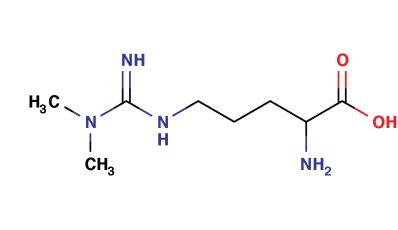BEVITAL AS
Targeted Metabolomics Services
Asymmetric dimethylarginine

Menu
Updated 21/12/2022
What is measured?
What is asymmetric dimethylarginine?
ADMA is formed by methylation of protein l-arginine (L-ARG) residues in vivo, is largely eliminated by metabolism (catalyzed by DDAH) and also excreted into the urine. It is an endogenous inhibitor of nitric oxide synthase (NOS), which catalyses the synthesis of NO from arginine. Elevated plasma ADMA has been observed in patients with cardiovascular disease, renal dysfunction, diabetes, pulmonary hypertension, preeclampsia, and plasma ADMA is correlated with several traditional and non-traditional risk factor for cardiovascular disease, including plasma total homocysteine and cholesterol (2).
Indication(s)
Assessment of endothelial function and cardiovascular risk.
Specimen, collection and processing
Patient/subject: ADMA concentration is unaffected by most diets.
Matrix: EDTA plasma and serum.
Volume: Minimum volume is 50 µL, but 200 µL is optimal and allows reanalysis.
Preparation: The blood sample must be centrifuged and the plasma/serum fraction put on ice, and frozen.
Transportation
Frozen, on dry ice. (for general instruction on transportation, click here)
Reported values, interpretation
Reported values: 0.4-1.0 µmol/L.
Intraclass correlation coefficient (ICC): 0.53. The relatively low ICC is mainly attributed to the low between-subject variability.
Literature
1. Midttun, O., Kvalheim, G., and Ueland, P.M. (2013). High-throughput, low-volume, multianalyte quantification of plasma metabolites related to one-carbon metabolism using HPLC-MS/MS. Anal Bioanal Chem 405, 2009-017.
2. Tousoulis, D., Georgakis, M., Oikonomou, E., Papageorgiou, N., Zaromitidou, M., Latsios, G., Papaioannou, S., and Siasos, G. (2015). Asymmetric dimethylarginine: Clinical significance and novel therapeutic approaches. Curr Med Chem 22, 2871-2901.